Some of the links in this post may be affiliate links.
Syngonium adds a tropical flair to your home with its arrow-shaped foliage that features a wide
color palette. They are easy growers, super adaptable and beginner-friendly. Keep reading
to explore 23 of the most beautiful
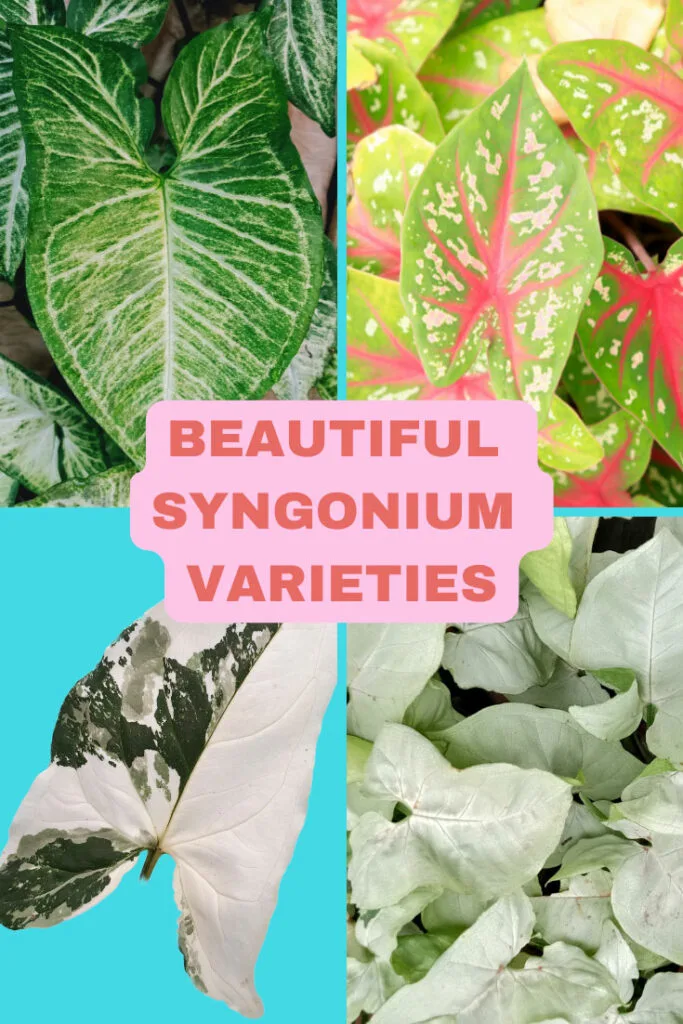
Also known as the Arrowhead plant or Nephthytis,
Syngonium is native to the tropical rainforests of Mexico, and South and Central America. There are 39 accepted species.
The plant prefers high humidity levels with warm temperatures and indirect sunlight, which is easy to recreate indoors.
You can also train the plant the way you want – from displaying it as a bushy specimen, or even allowing it to vine out. Most
Table of Contents
23 Attractive Syngonium Varieties for Your Indoor Garden
1. Syngonium ’Neon Robusta’
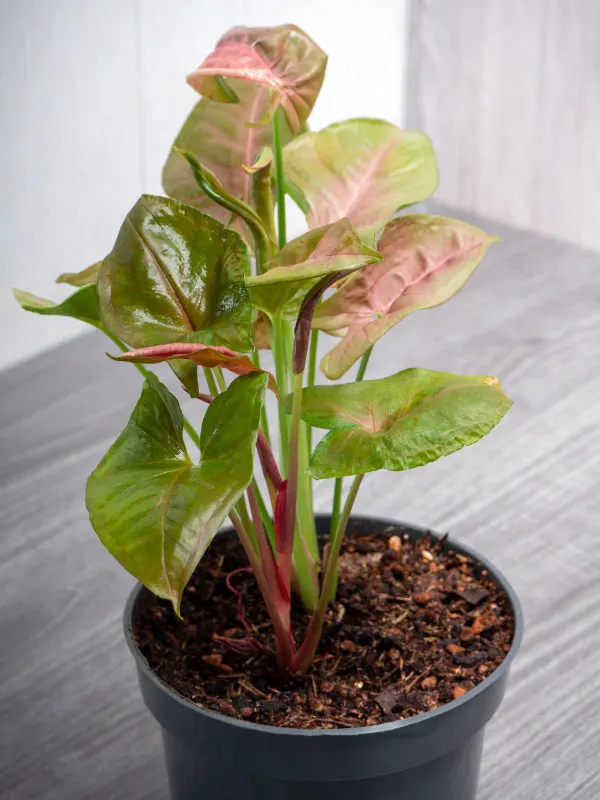
Syngonium ‘Neon Robusta’ or the Pink
love adding a splash of color to their indoor garden.
The plant has one of the most spectacular foliage of all Syngoniums. The leaves are an irresistible dusky pink hue, covered with a metallic sheen. Juvenile leaves are dominated by green with hints of pink along the veins, and feature pink undersides.
This variety of
2. Syngonium ’Snow White’
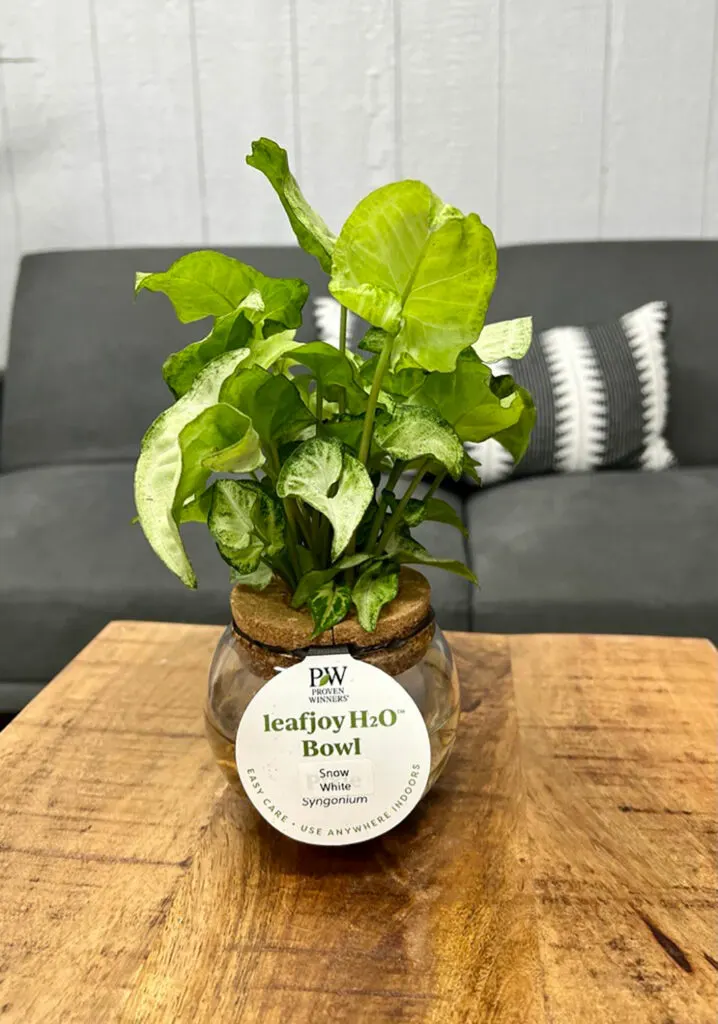
Syngonium ‘Snow White’ is a compact, non-trailing variety of
and charming appearance to your room.
The arrow-shaped leaves are highly variegated and have a speckled appearance with shades of green and a dusting of white. It is a perfect houseplant for beginners and grows well in small spaces.
3. Syngonium ’Gold Allusion’
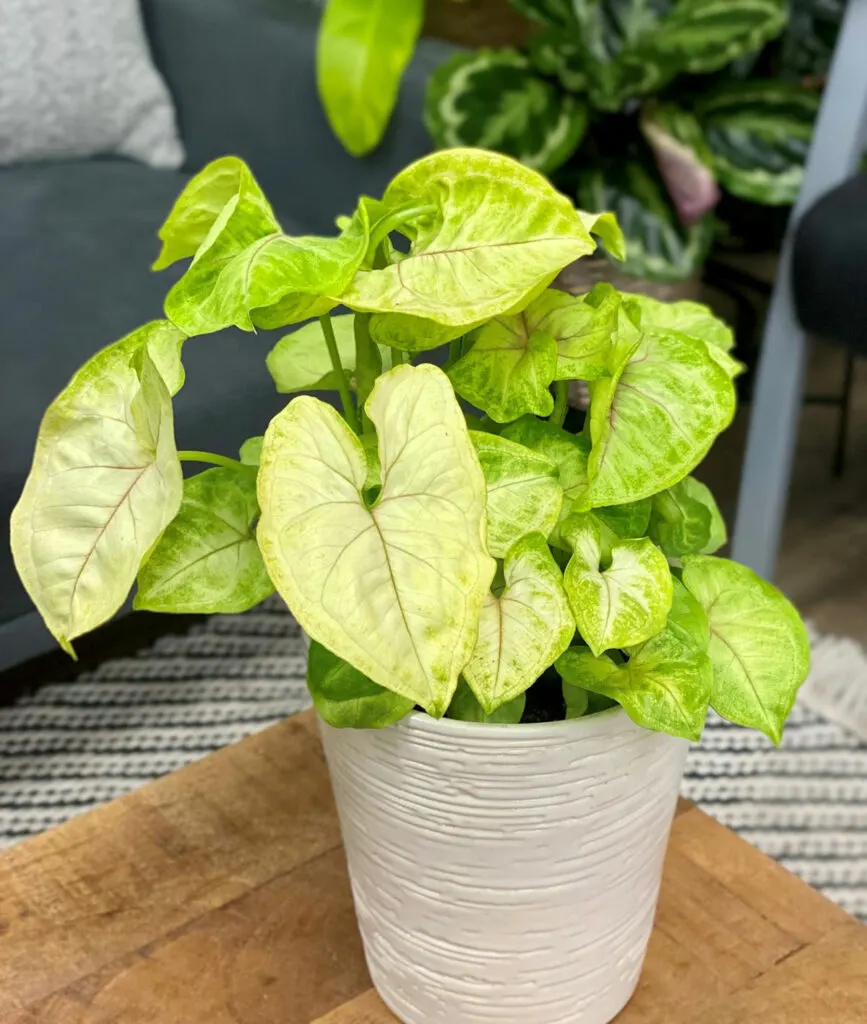
Syngonium ‘Gold Allusion’ can light up even the dullest of rooms with its golden-green foliage. The medium-sized, heart-shaped leaves have irregular patterns with green and golden-yellow hues that feature pinkish veins.
The plant has a trailing habit, making it an excellent option to grow in a hanging pot to show off its beauty.
Although the plant thrives in shady areas, it may lose its distinct, golden color if you keep it in too dim of a location.
4. Syngonium ‘Pink Allusion’
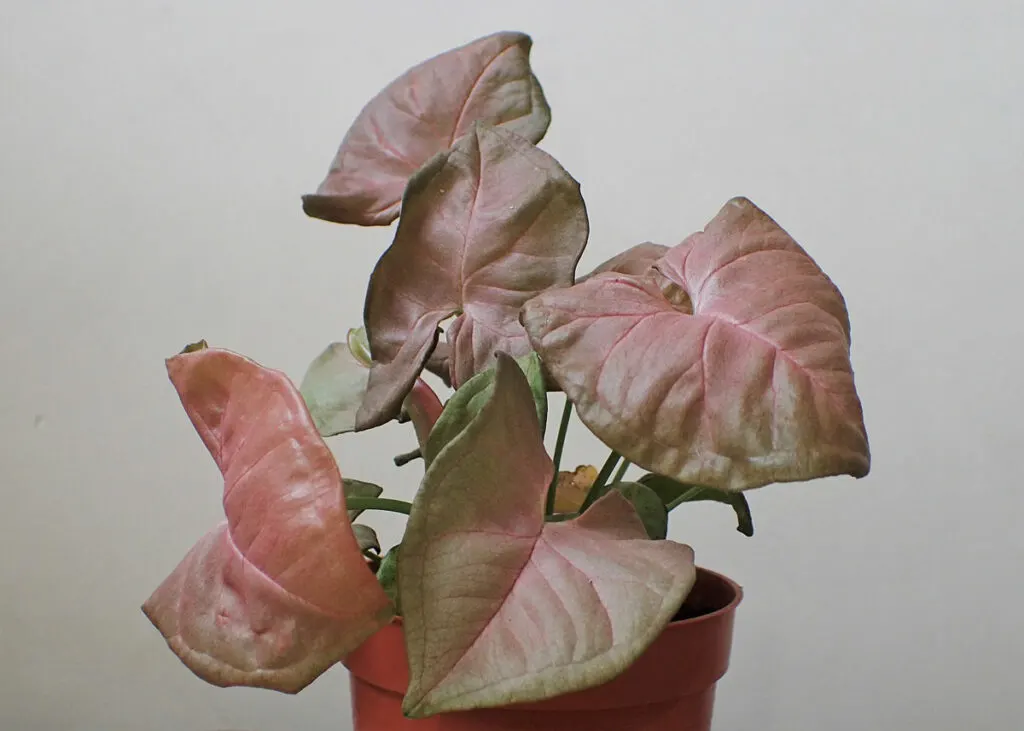
Syngonium ‘Pink Allusion’ is another
You can tell them apart from the shade of pink, which is brighter in the Pink Allusion and more muted in the Neon Robusta.
5. Syngonium ’White Butterfly’
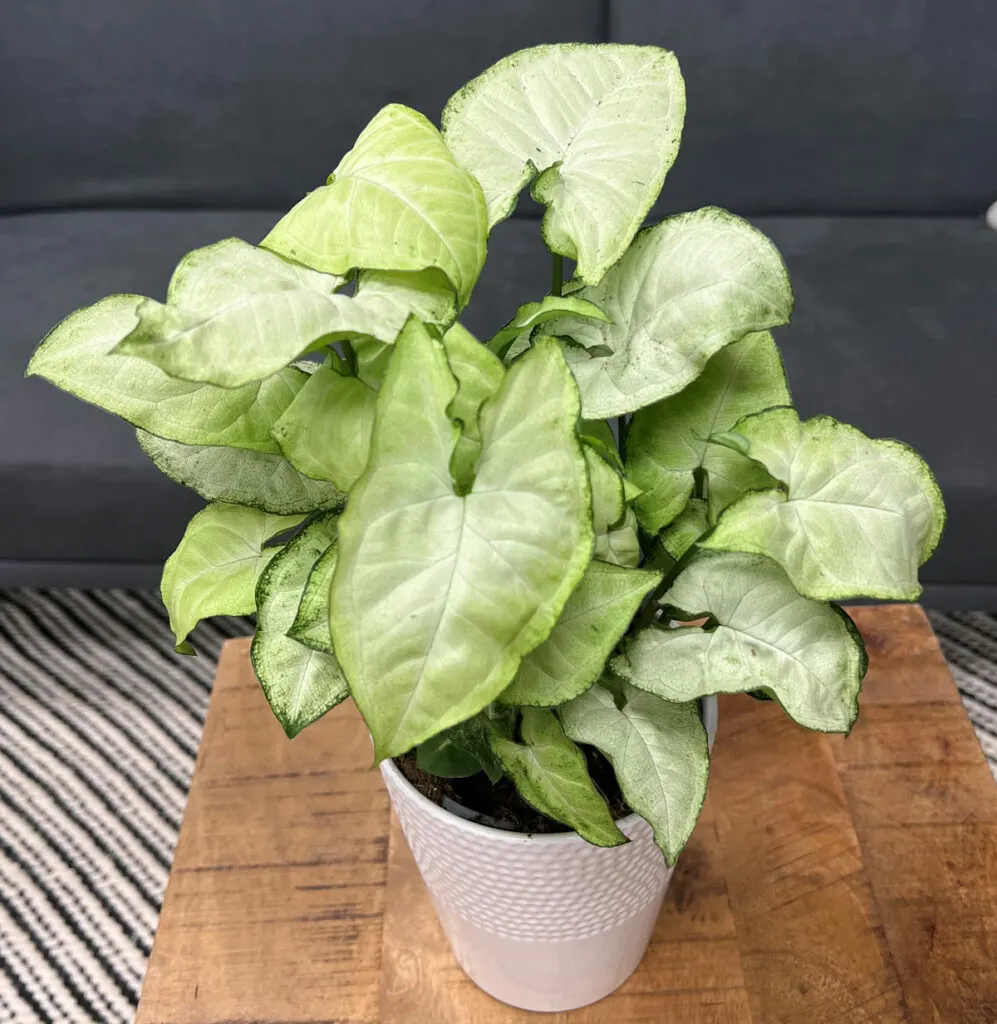
Syngonium ‘White Butterfly’ is the white cultivar of
Do note that the plant can be unruly at times and needs pruning to keep its growth in check and maintain tidiness.
6. Syngonium ’ Mini Pixie’
First timers often mistaken
The foliage is delightful with shades of green and yellow that form attractive patterns.
7. Syngonium ‘Albo Variegatum’
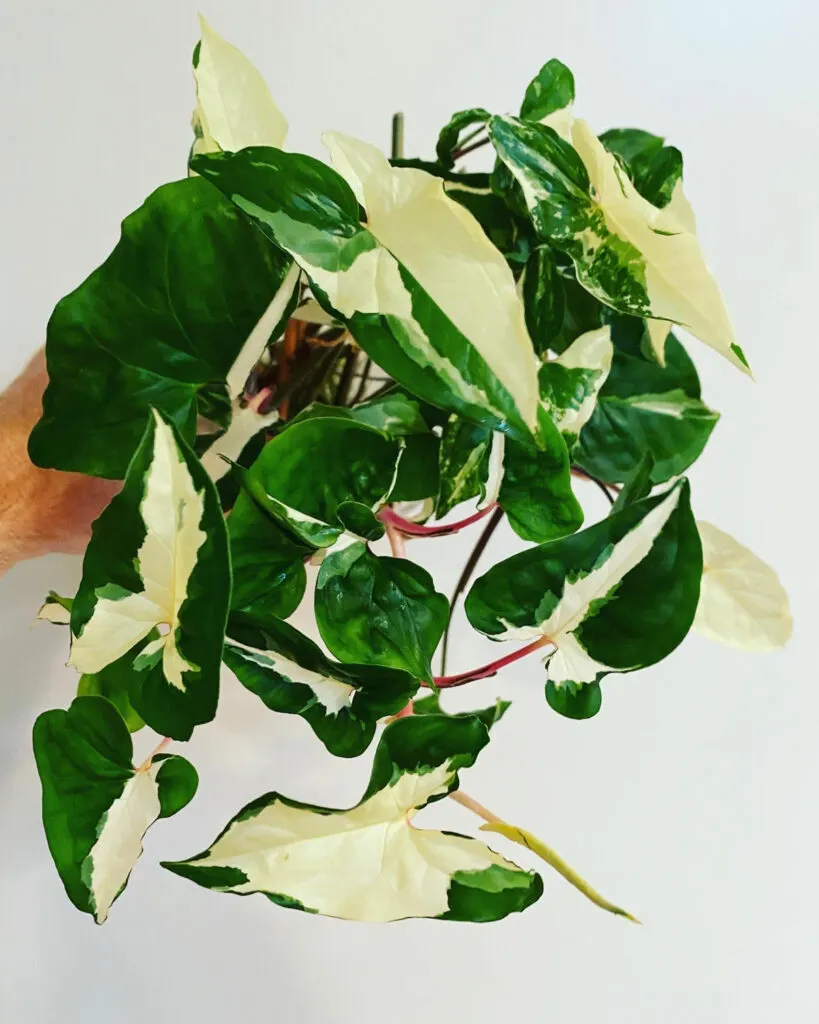
Syngonium ‘Albo Variegatum’ or Variegated
Plant collectors adore this variety for its incredible ornamental beauty, as well as for its very vigorous growth habit. It will quickly vine out, so you can either keep it that way, or prune it back and propagate it to keep a bushier appearance.
It has a tendency to start producing all green leaves, however. The best way to retain its variegation is by cutting off the portion of the vines that have mature leaves in solid green.
Simply cut the back to the first leaf that exhibits balanced variegation. This will encourage the formation of new leaves with more variegation, a quality for which the plant is best known.
8. Syngonium ‘Exotic Allusion’
Syngonium ‘Exotic Allusion’ is another
The arrow-shaped leaves look stunning with their pale green color. A unique aspect is its cream-colored venation which is not usually present in the other cultivars. The coloration is more prominent if you keep the plant in good lighting.
9. Syngonium ‘Green Gold’
Syngonium ‘Green Gold’ has lovely foliage that looks too good to be real. The long, arrow-shaped leaves develop beautiful variegation with light and dark green.
Green Gold has a trailing nature and grows aerial roots easily. If you prefer a bushy look, keep pruning the plant regularly.
10. Syngonium ’Bold Allusion’
Syngonium ‘Bold Allusion’ has graceful leaves which are sprinkled with the softest shades of
light green and baby pink.
It is said to be a tetraploid of ‘Pink Allusion.’
11. Syngonium ‘Cream Allusion’
Syngonium ‘Cream Allusion’ is another stunner from the Allusion series of the arrowhead vine. The foliage features a refreshing light green with cream centers and pink veins.
It has a compact size that can be grown anywhere in your home, from coffee tables to window sills.
12. Syngonium angustatum
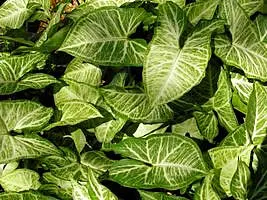
Syngonium angustatum is a rare variety of
Young leaves have a green surface with yellow venation that lends a distinctive appearance. As the plant matures, the yellow color fades and the leaves develop up to nine lobes instead of the typical three.
13. Syngonium ‘Painted Arrow’
Syngonium ‘Painted Arrow’ features foliage with spectacular patterns and shades of bright green and creamy white.
It will vine out, so if you want to keep it bushier, simply trim it back, and you can also propagate at the same time if you wish.
14. Syngonium ‘Holly’
Syngonium ‘Holly’ has striking silvery-white leaves. The arrow-shaped leaves have pointy edges and a freckled appearance that adds a tremendous textural appeal.
15. Syngonium ‘Pink Splash’
Syngonium ‘Pink Splash’ is a very striking cultivar with deeply lobed leaves, and hot pink variegation with some green as well.
Be careful not to place your plant in too dim of lighting otherwise it may lose its rich, pink coloration.
16. Syngonium ’Emerald Gem’
Syngonium ‘Emerald Gem’ is a true gem in the
and white foliage. Each arrow-shaped leaf has a beautiful green and white marbled appearance.
17. Syngonium ‘Albolineatum’
Syngonium ‘Albolineatum’ is a harder to find
variegated foliage.
It is a strong, fast grower.
18. Syngonium ‘Maria Allusion’
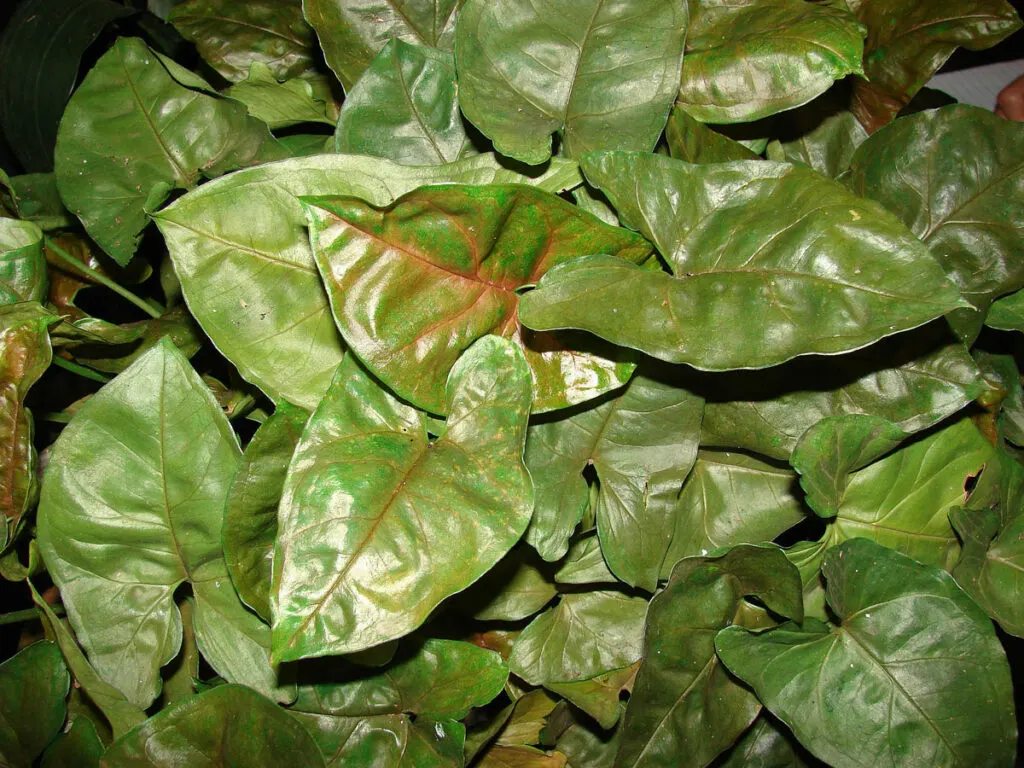
Syngonium ‘Maria Allusion’ is another stunner from the Allusion line and features spectacular green and pink foliage. The butterfly shaped leaves have mottled waves of green with pink accents and pink venation.
The new leaves are almost totally pink and then fade to a green color.
19. Syngonium ‘Trileaf Wonder’
Syngonium ‘Trileaf Wonder’ is an unusual and a truly wonderful variety of
20. Syngonium ‘Albovirens’
Syngonium ‘Albovirens’ is a lovely variety of
Juvenile leaves are green with slight variegation that becomes more prominent as the plant matures. Fully grown leaves are bright green with creamy centers. It is slower growing compared to many other
21. Syngonium ‘Berry Allusion’
Syngonium ‘Berry Allusion’ is a stunning variety of
Interestingly, the green color develops only in mature leaves as the young ones have a pinkish appearance.
22. Syngonium ‘Wendlandii’
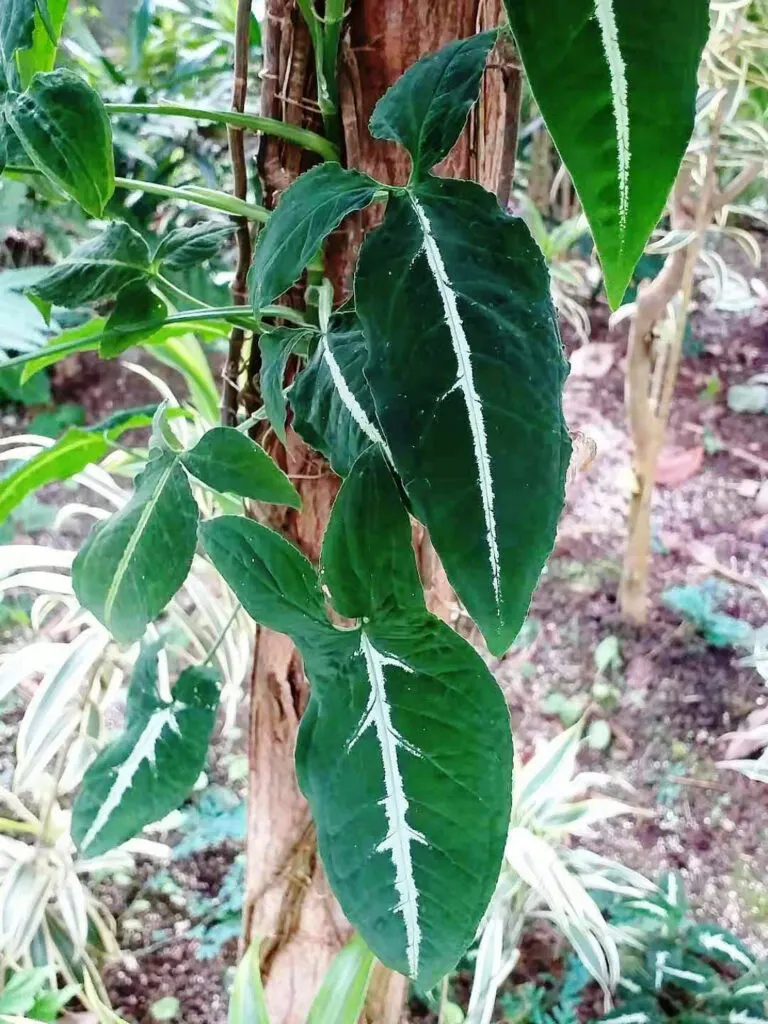
Syngonium ‘Wendlandii’ has pointy, arrow-shaped leaves that have a velvety surface with green and silvery variegation.
The plant is also known as the ‘Silver Goosefoot’ for its goose-foot like shaped leaves. As the plant matures, the leaves becomes increasingly lobed and form distinctly separated leaflets.
23. Syngonium ‘Strawberry Cream’
Syngonium ‘Strawberry Cream’ is an irresistible pink
delicious strawberry cream milkshake. Interestingly, only the young leaves feature a pink color.
Mature leaves develop a green color with just hints of pink.
If you’re looking for an amazing potting mix that you can use straight out of the bag for your Syngonium, check out the Rainforest Soil Blend from Oh Happy Plants. This is an amazing mix and you will get 10% off at checkout automatically if you use my link.
For more information on the cultural care requirements and propagation of

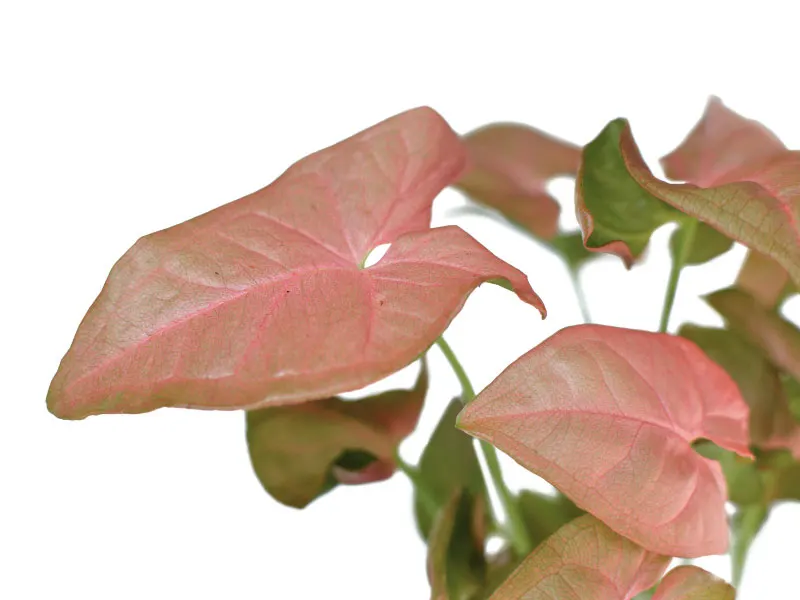
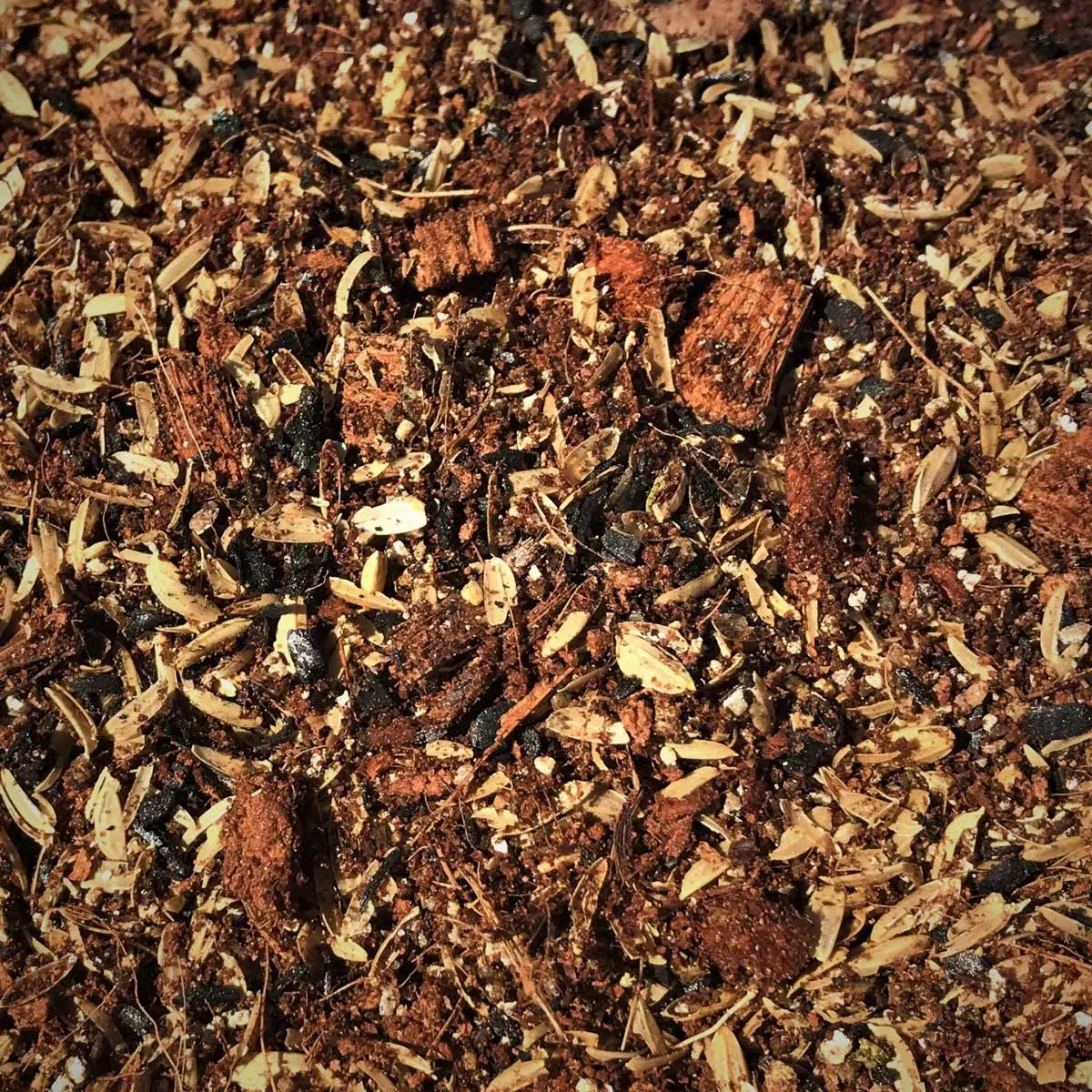
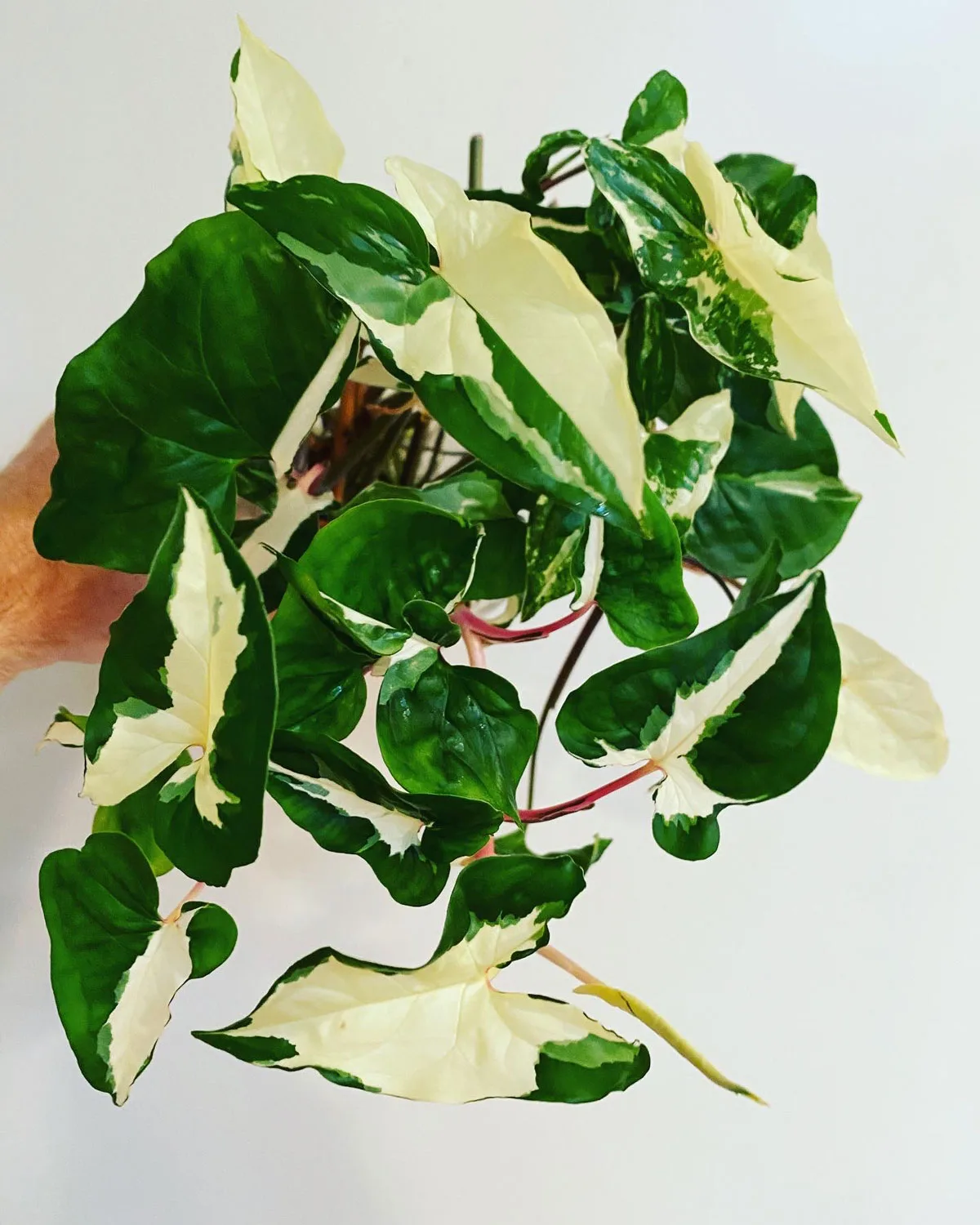
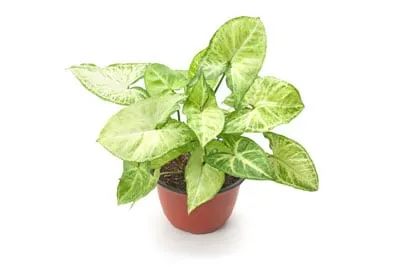
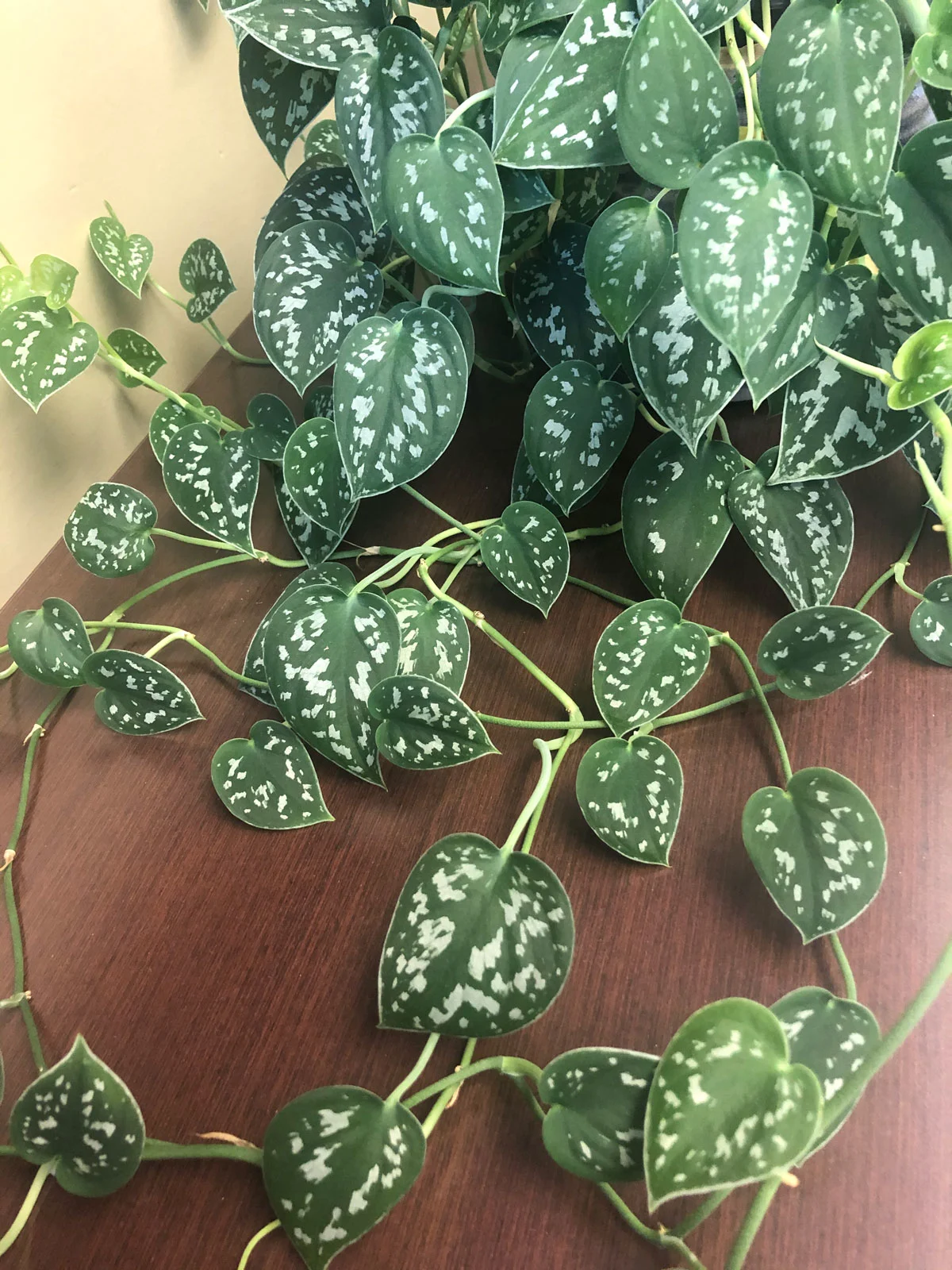
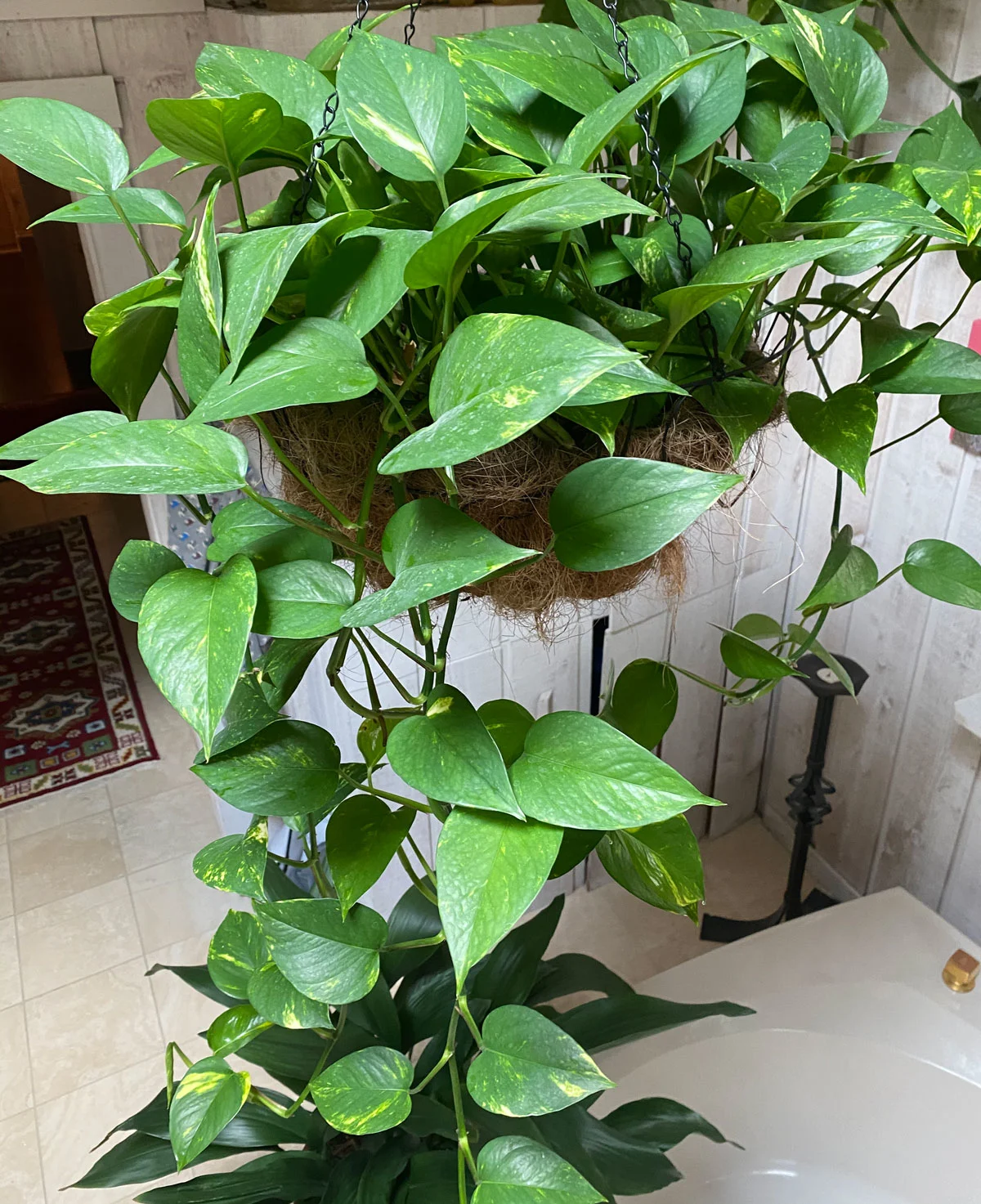
Kylie
Monday 6th of February 2023
Hello, not sure if my page is loading properly, but your page says there are 39 accredited Syngonium species, yet lists only lists 23 with pics. Is this correct? Im chasing a proper syngonium guide so I can verify what I have against what Id love to make the collection complete. Many thanks!
Raffaele
Monday 6th of February 2023
I did not include all of them and it wasn't meant to be a comprehensive post. Species are also different from cultivars and when you count both, there are more than the 39. Hope this helps a bit.